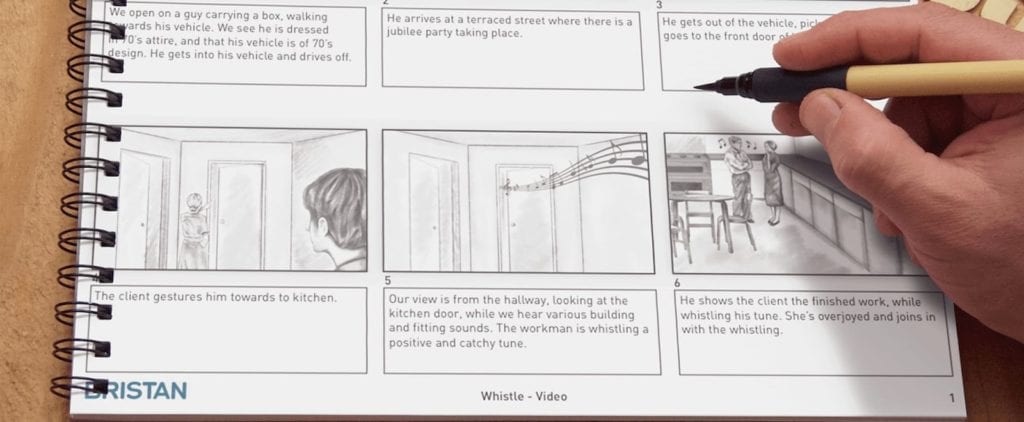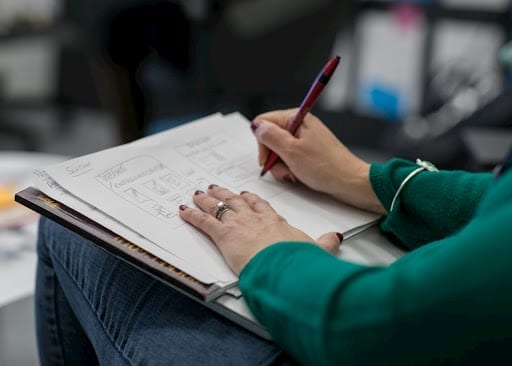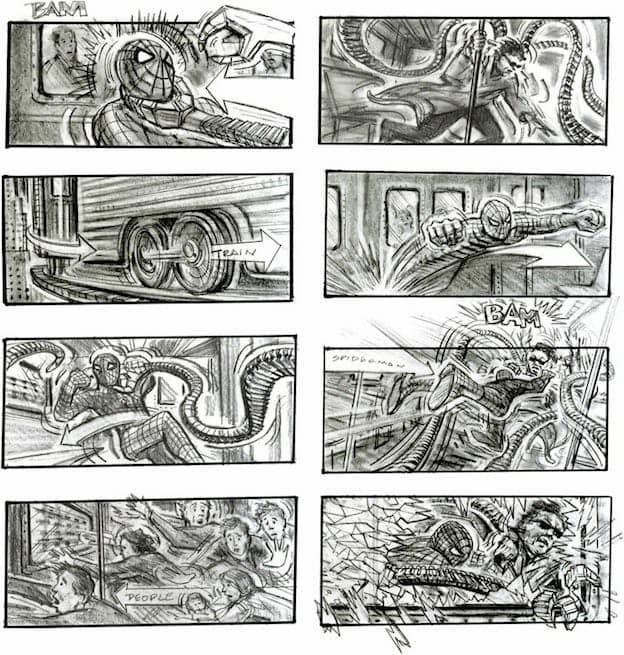Do I Need To Storyboard My Film?
Wondering if making a storyboard is necessary for your film? Should you skip this step if you already have an idea of what your film will look like?
Storyboarding may seem like some mundane, pointless task that will end up in your trash following completion — especially if you’re not an artist, right? But in reality, storyboarding is a crucial part of the pre-production planning that visually maps out your entire project — which greatly benefits you and members of your crew.
Filmmaking requires a lot of intricate planning. Every shot, scene, and sequence in a film typically demands several well-rehearsed crew members executing their roles in a specific manner — such as lighting techniques, camera movements, framing, ques, timing, special effects, etc.
Of course, not every film will require as much man-power and organizing to create, but it’s important to understand the significance of prepping and pre-production planning. The way you plan and prepare for your shoot will ultimately affect the outcome of your film.
We give pre-production tips on our previous blog if you’re interested in learning more about what goes into pre-production planning.
Pre-Production Tips
Below, we’ll go over some of the reasons why you should create storyboards and how they will benefit your production, how to craft them, and how professional filmmakers utilize them for their films.
What Is A Storyboard?

Before we jump into the reasons why you should create storyboards, let’s look at an actual definition to get a better understanding of what they are.
Studiobinder defines a storyboard as a visual representation of a film sequence and breaks down the action into individual panels. It is a series of ordered drawings, with camera direction, dialogue, or other pertinent details. It sketches out how a video will unfold, shot by shot.
Although sketching and drawing out individual panels is the traditional way of storyboarding, there really is no definitive way to create and define a storyboard.
A storyboard can include photographs, reference images, have little-to-no description, or a ton of description involving framing, camera movements, character action, etc. This is entirely up to you as long as it helps you and your film crew visualize and plan out the film better.
So don’t be discouraged from storyboarding your film. You don’t need to be a world-class storyboard artist to sketch out your film. Draw stick figures if you have to. The only thing that matters is communicating the film’s vision, and you can do this with stick figures or even photographs.
Should I Create A Storyboard?

Filmmaking is all about planning ahead so that when it comes time to shoot, everyone is on the same page and production goes as efficiently as possible.
Creating storyboards is a great way to plan and organize your film. It allows you to pull all your ideas and thoughts out of your head and onto the paper. This gives important crew members — such as the director of photography — an idea of the types of shots, lighting, and composition you’d like for your film.
It also gives the art department and production designer a much better idea of how you’d like your film to look.
Oftentimes, depending on the film’s budget, people like to hire a storyboard artist to create well-drawn panels that illustrate the director’s vision in the best possible way.
Take a look at some professional storyboard examples used for larger productions. These are typically created by experienced storyboard artists that are able to articulate the look of certain shots, scenes, and sequences effectively on the page.
If you have the necessary funds and/or connections, you may want to pick up a storyboard artist. Take a look at our previous blog on ways to assemble a film crew if you’re having trouble finding a storyboard artist.
How To Assemble Your Film Crew
owever, you may be someone who’s working on a smaller budget feature or short film, and may not have the funds for an experienced storyboard artist or top of the line storyboard software.
That’s okay! If you’re working on a smaller budget film, you really don’t need to hire a storyboard artist when you could easily do it yourself — as long as you’re able to properly communicate your vision with each shot.
You can also download and use free storyboard templates, offered by online services, such as Studiobinder. With these free templates, you can easily download them, print them, and get to drawing.
If you’re a beginner filmmaker learning how to properly budget smaller productions, check out our previous blog for tips on budgeting during pre-production.
Also, it’s important to know that it’s okay if you need to stray from your storyboards at times during a shoot. Things change all the time when you’re on set and as a director, it’s your job to adapt to change and solve problems.
Examples may include an issue with your location preventing a certain shot setup you had drawn on your storyboard, or if you wanted to switch things up while on set after getting a new idea.
You don’t need to mimic every panel and sketch on your storyboard to the bone. So don’t feel like if you make yourself a storyboard, you are required to stick with it.
How Successful Filmmakers Use Storyboards
As we mentioned before, storyboarding your film or idea is one of the best ways to visualize and plan out the look and feel of your film. If you’re still feeling unsure about using storyboards, take a look at how some of the greats use storyboards.
Filmmakers such as Alfred Hitchcock and Martin Scorsese are two prime examples of professionals using storyboards as a crucial step in their pre-production process. Hitchcock was known for his intricate and heavily detailed storyboard drawings. His boards were so well-made, they resembled a comic-book.
These filmmakers, and many others — such as Christopher Nolan, James Cameron, George Lucas, Francis Ford Coppola, Sam Raimi, etc, have shown much emphasis on the storyboard making process and how it can greatly improve their films.
Take a look at some of their storyboard examples here.
Sometimes, storyboards are simply created to enhance a concept or an idea in someone’s head. This can happen before the writing process even starts. This all depends on the director and how they prefer to map out and tell a story.
Conclusion
toryboards, especially for lower-budget indie projects, do not have to be as detailed and colorful as the most renowned filmmakers in the business. The examples we showed you are meant to inspire beginner filmmakers unfamiliar with the storyboarding process.
Creating storyboards will only improve the production of your film, as it will act as a roadmap to your finished product. Its purpose is to guide and inspire you and your team to create the shots you dream of in your head.
Sometimes having a visual representation of your ideas instead of words can spark new ideas or give you a better understanding of the film you’re trying to create.
If you already have storyboards and you’re looking to bring them to life, check out our funding opportunities for the chance to receive financing for your film.
